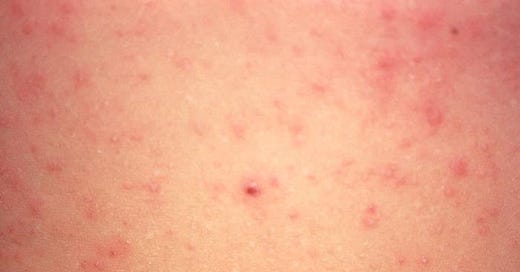The Philippines Department of Health (DOH) is reporting a significant increase in measles cases in 2023.
According to recent data published in the Disease Surveillance Report, 1,114 measles cases recorded from Jan. 1 to Aug. 19 this year.
This is a 215 percent increase in cases compared to the number of cases reported during the same period in 2022 (354).
Central Luzon (Region III), which includes seven provinces- Bataan, Bulacan, Aurora, Tarlac, Pampanga, Zambales and Nueva Ecija—has seen the most cases (181), followed by BARMM – Bangsamoro Autonomous Region In Muslim Mindanao (121) and Central Visayas (117).
The number of fatalities due to measles reported this year is four.
Vaccines and Your Child: Separating Fact from Fiction
According to the Centers for Disease Control and Prevention (CDC), measles is caused by a highly contagious virus that spreads through the air by direct contact with infectious droplets or by airborne spread when an infected person breathes, coughs, or sneezes. The measles virus can live for up to two hours in an airspace after an infected person leaves an area.
People can spread measles up to four days before and four days after a rash.
Signs and symptoms of measles include maculopapular rash, high fever, and a cough, runny nose, or red, watery eyes.
Subscribe to Outbreak News TV on YouTube
Measles can be severe in all age groups and can lead to serious complications, such as pneumonia (infection of the lungs) and death. Several groups are more likely to suffer from measles complications, including children younger than five years of age, adults older than 20 years of age, pregnant women, and people with compromised immune systems, such as from leukemia or HIV infection. Common complications are ear infections and diarrhea. Serious complications include pneumonia and encephalitis (infection of the brain).
Measles can be prevented with MMR vaccine. The vaccine protects against three diseases: measles, mumps, and rubella.
In May, the DOH launched an immunization campaign against measles and rubella targeting children aged nine to 59 months.





